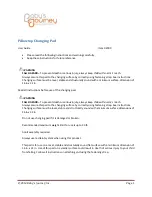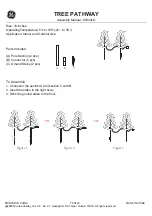
Operating Instructions
21
5. Connect to the voltage supply
5.1 Preparing the connection
Safety instructions
Always obey with the following safety instructions.
•
Make only connections when the system is not live.
•
If surge voltages are expected, install surge voltage protection devices.
Cable shielding and grounding
In this case the device is designed in protection class II. Always connect the device to the vessel earth
(equipotential bonding system) or, in the case of plastic vessels, to the nearest earth potential.
There is an earth terminal on the side of the device housing for this purpose.
If a shielded cable is required, connect the cable shield at both sides to the earth potential. The shield must
be connected to the internal earth terminal in the sensor. The external earth terminal on the housing must be
connected to the equipotential bonding system with low impedance.
If equipotential bonding currents are expected, the connection must be made on the evaluation side using a
ceramic capacitor (for example 1 lF, 1500 V). The low frequency equipotential bonding currents will now be
suppressed but the protective effect for high frequency interference signals will be retained.
Warning
There are large potential differentials inside the galvanic system and in vessels with cathodic corrosion
protection. In this case the two-sided shield earthing may result in considerable equalising currents over the
cable shield.
To prevent this the cable shield may be connected to just one side of the earth potential in the control cabinet
for these applications. The cable shield must not be connected to the internal earth terminal in the sensor and
the external earth terminal on the housing must not be connected to the equipotential bonding system.
Information
The metallic parts of the device (process connection, pick-up, sleeve tube, etc.) have a conductive connection
to the internal and external earth terminals on the housing. This connection is either directly metallic or, on
devices with an external electronic system, via the shield on the special connection cable.
Details of the potential connections inside the device are provided in the section entitled "
Technical data
".
5.2 Connection
Connection equipment
The voltage supply and signal output are connected using spring terminals in the housing.
The connection to the display and control module and to the interface adapter is made using contact pins in
the housing.
Information
The terminal block is a plug-in unit and can be disconnected from the electronic system. To do this raise the
terminal block with a small screwdriver and pull it out. It must audibly lock into position when it is reconnected.
r
!
















































